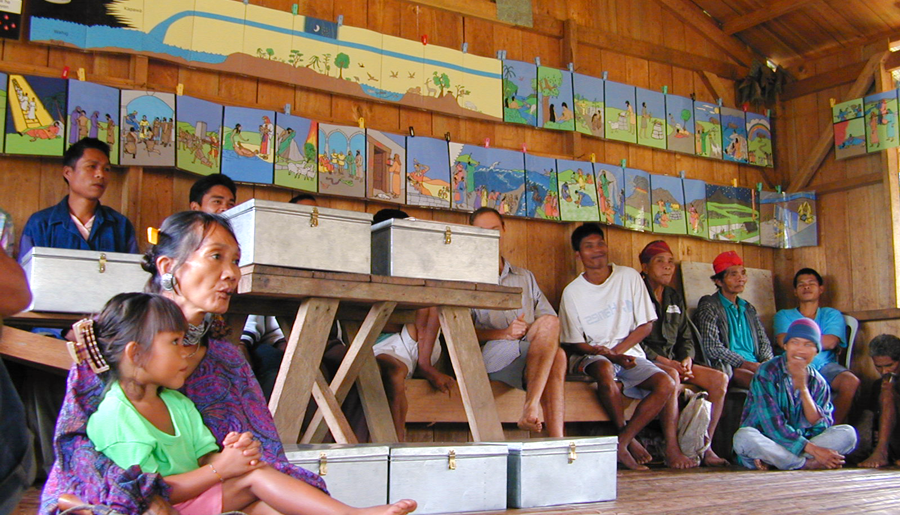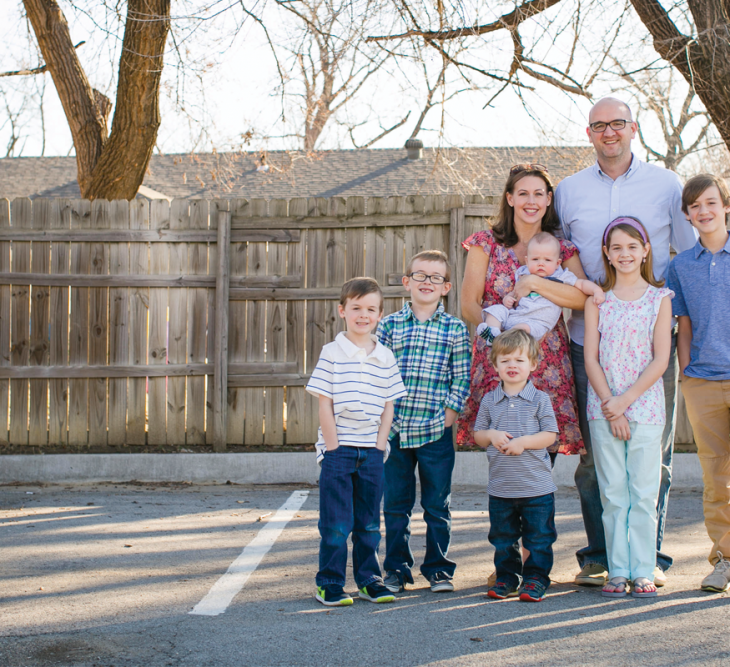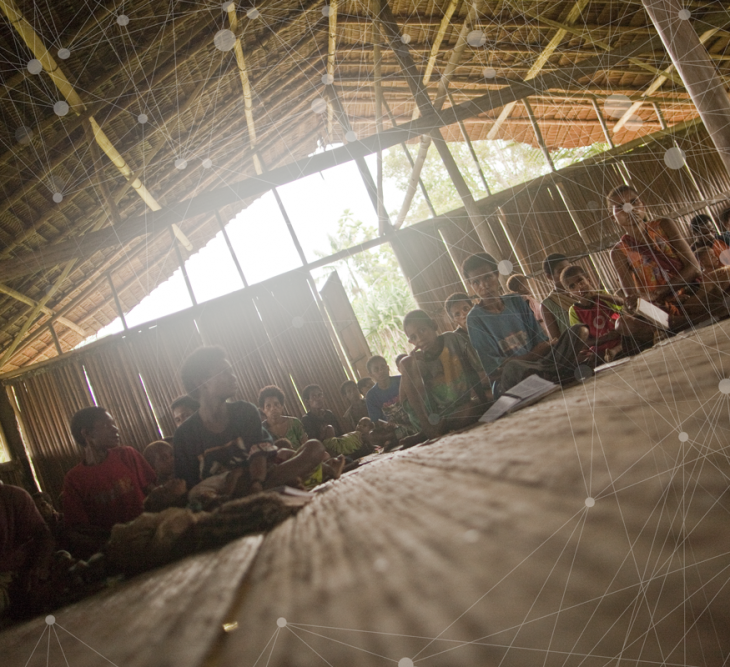Commit to Faithful Men

What does it mean to have a “thriving church”? According to Ian Fallis, strategist for the Advancement Team of Ethnos360, a thriving church is simply “a body of disciples making disciples.” That is a clear, cogent statement.
But to have disciples means there must be teaching, mentoring, well … discipling. Someone has to be the teacher, the mentor, the discipler. Philippians 4:9 shows us Paul’s method: “The things you have learned and received and heard and seen in me, practice these things.”

In II Timothy 2:2, Paul enjoins Timothy that “the things you have heard from me among many witnesses, commit these to faithful men who will be able to teach others also.”
Ethnos360’s goal is “a thriving church for every people.” To arrive at such a point requires initially that the missionaries be those mentors, those “Pauls,” those disciplers — in order that the disciples become disciplers themselves. With this in mind, it becomes essential that the strategy chosen to reach the unreached include a strong emphasis on discipleship.
Very often we tend to think of ourselves as indispensable — surely the work can’t continue in our absence. For instance, twenty-five years ago, three missionaries working with the Kuna people of Panama were kidnapped. The other missionaries in that province with that people group had to evacuate, leaving new believers and fledgling churches. How could those churches survive, let alone thrive?
But the missionaries had left disciples and disciplers behind when they evacuated. God used those discipled Kuna men and women to continue the work when the missionaries had to take a back seat in the process. The result? Today, there are many strong, thriving Kuna churches that are reaching out to make more disciples, even as far away as Korea.
New Disciplers
How does this process of discipleship work? Not quickly. It requires years of patient modeling and mentoring.
Travel with me to the Philippines to the Banwaon people group who live on the southern island of Mindanao. Meet Albert and Lynne Castelijn, members of Ethnos360’s global partner Crossview Australia. In May of 1993, four months after the Panama crisis, the Castelijns arrived in the Philippines with two young children. Eighteen months of culture and language acquisition followed, enabling them to minister in Cebuano, one of the two trade languages of this island nation.
Albert and Lynne were drawn to the Banwaon people group, primarily because the existing team of missionaries urgently needed a Bible translator and someone to work on curriculum development, both falling in line with Albert’s engiftments and passion. Even before they were done with Cebuano studies, they had been invited — and had accepted the invitation — to join the Banwaon team. Lynne said, “In February of 1995, our family of four (with one on the way!) entered the Banwaon village and began more culture and language acquisition.”

Let’s back up a few more years. The team had started working among the Banwaon about a decade before. Years before the Castelijns arrived in Mindanao, the team had relocated to a different Banwoan village whose culture and language had not been mixed with other cultures. At this time, the team was made up of Ron and Sandy Lashuay and Daryl and Pam Phillips.
The Lashuays and Phillips engaged in intensive culture and language study. In order to begin the process of discipleship, they did much in the areas of medical work and literacy to build relationships, to establish credence with the Banwaon and to show Christ’s love in practical ways.
The Church Is Born
It was this team that presented the gospel to the Banwaon in 1987. The very positive response to the Good News saw the Banwaon church established.
As an example of how the team began to disciple from the beginning, Albert and Lynne recount the following story that was told to them of what took place soon after the gospel was presented to the Banwaon.

“One of our favorite stories is how not long after coming to Christ, one of the main datus (chiefs) came to Daryl [Phillips] and said ‘This is amazing! You need to go and tell my relatives over the mountains about this so they can be saved too!’
“Daryl replied, ‘I’m teaching here. But you’re a believer now. You have heard the story. You go and teach them.’
“The datu wasn’t happy, and they argued back and forth somewhat. Eventually they compromised. Daryl had recorded the chronological teaching onto cassette tapes. The datu and others would take the hand-wound tape recorder/players and the cassettes, along with some hand-drawn and crayon-colored pictures wrapped up in a bamboo tube, over the mountains with them. They’d crank the recordings and the Banwaon men would expound on the recorded teaching.
“In this way, we feel a wonderful precedent was set of the Banwaon people taking on responsibility and growing as a fledgling church.”
Leaders Chosen
Remember the phrase “disciples making disciples”? Ron and Daryl had taken the mandate to heart to make disciples of the believers. There were about 20 men trained to be Bible teachers, taking on the responsibility of teaching the lessons to their own people. To prepare these men for leadership, Ron and Daryl began to include them in discussing issues that had poked their way into the church. Ron and Daryl encouraged the men to use their God-given gifts and abilities to lead the church, using the Word that they had available for guidance.
Just as Paul was not the only discipler to the churches in the New Testament, so the Banwaon were blessed with more than one gifted discipler. In 1991, the Lashuays left for medical reasons and in 1992, Bill and Karmen Purcell joined the team. By 1995 the team consisted of the Phillips, the Purcells and the Castelijns.
Who, then, was going to lead the Banwaon church? Who would choose the leaders? Since the qualifications for leaders had been taught and modeled and since the church was maturing and observing men and women functioning as leaders, the leadership for the church was chosen by both the church body and the missionaries. Even so, those chosen were hesitant to take on these positions of leadership. After reviewing the qualifications from Scripture, they responded with this statement: “We’re not sure we can do all that!”
In December of 2017, the Banwaon church officially recognized 12 men and one woman from two separate churches and appointed them as elders and deacons and one deaconess. Albert said, “These godly people have already been functioning for a number of years, using their spiritual gifts to teach, encourage and build up the church.” There are presently nine elders functioning in three different Banwaon churches.
Training is ongoing. They have weekly meetings, have personal discipleship time with the missionaries and work with the issues that arise in the church. They are learning how to disciple others.
“The Things You Have Learned and Received… “
Discipleship has been at the forefront of the Banwaon church plant. The missionaries modeled it for the new believers. As mentioned, men were trained as Bible teachers early in the process. Then those men began the discipleship process all over. The teachers would always go in pairs: one older, more mature teacher would take a younger, less experienced one under his wing and help him progress from short Bible readings during the teaching to teaching the entire lesson.
As a result of this mentoring, all the leaders and many of the lay people can open the Word and teach truth to the church with confidence.
Discipleship isn’t just occuring with the Banwaon men. The older, more mature women are shouldering the responsibility of discipling the younger women. Yes, this is just what the Scriptures instruct the church to do.
Pushing Boundaries
Are the Banwaon elders content to stay in their villages and rest on their laurels? No, indeed. Not only the leaders, but also the church as a whole, have hearts ready to reach out to others. Many times, they reach out through family ties, even to distant relatives. The gospel has spread to their “Judea” and even to their “Samaria.”
More recently the church has sent two men as missionaries to the very edge of their people group, to the border of the neighboring group. The “boundaries” between people groups here are more blurred than we tend to think. It’s not like a line on a map. There is usually an overlapping area where intermarriage and mixing of the two groups are more common. This outreach is in that area, but more on the “side” of the neighboring people group.
One of the present elders, whose name is Rogelio, is actually from another people group. After living among the Banwaon and marrying a Banwaon girl, he became a believer. Later, he went to his own people group on the other side of the mountain to share the gospel, resulting in some believing the Truth. This took place before he was ordained as an elder!
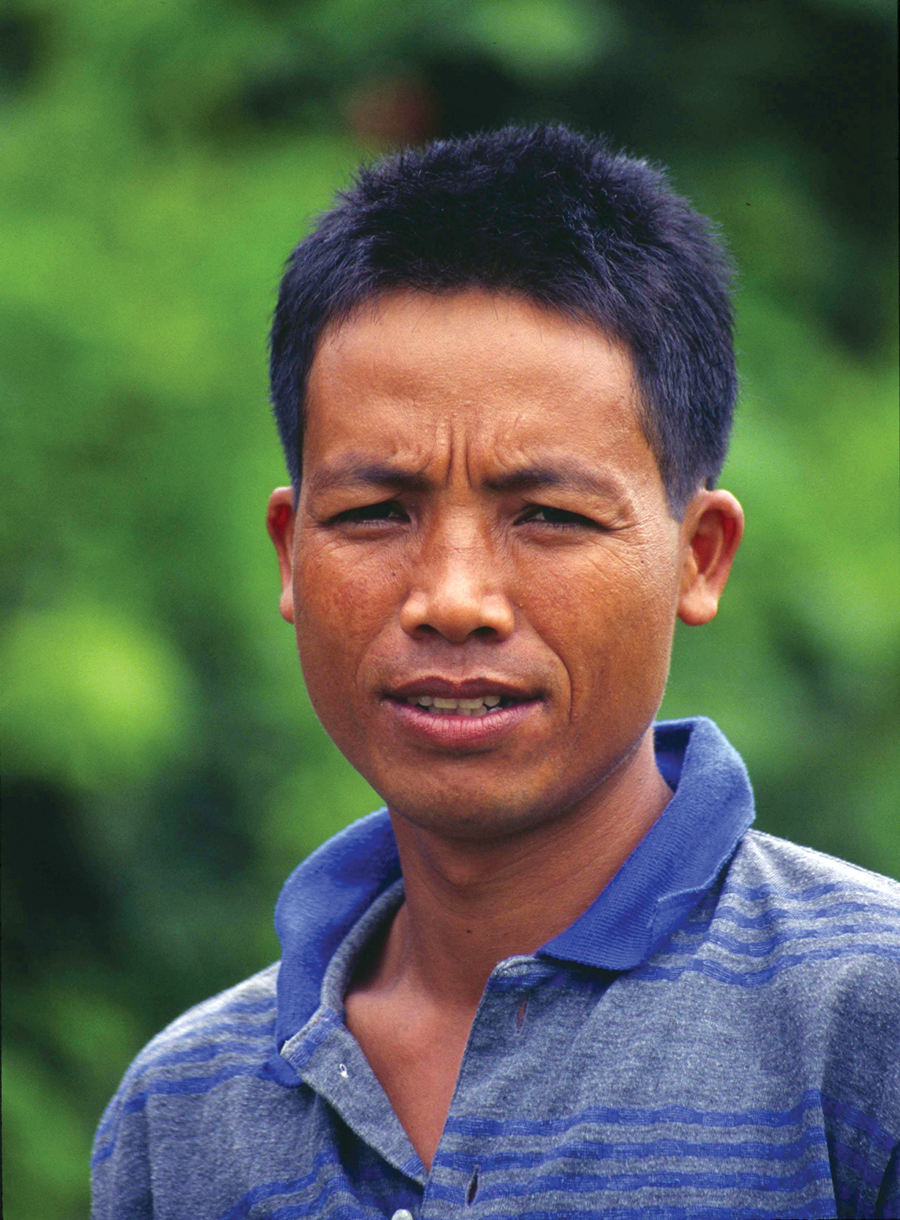
The newest group of elders are talking seriously about taking the next step — taking the gospel to the villages of the Banwaon people where it has never been presented. The church has had missionaries take the gospel to other parts of the Banwaon tribe that are far from the main church but still within the Banwaon “boundaries.” One is a four-hour hike away and another is an eight-hour hike. They want to “push the boundaries,” as Albert put it, in order for the Truth to reach all their families and clans. This is the heart of the Banwaon church.
A Thriving Church
Taking a look back at the definition of a thriving church, is it fair to say the Banwaon church is thriving? Most assuredly it is. Is it perfect? Most assuredly it is not. The Banwaon church has taken the Apostle Paul’s admonition to heart: the things they have learned, received, heard and seen from the Ethnos360/Crossview Australia team, they have practiced. The Lashuays, Phillips, Purcells and the Castelijns have committed much to faithful men and women who have in turn taught others.
We are so used to having the entire Bible in our hands in order to teach. The Banwaon don’t have that luxury, yet the leaders continue to teach faithfully. The translated books of I John and I and II Corinthians were checked this past March, and Albert and Lynne plan to include them in the Banwaon New Testament this month. When these books have been added to the existing translated portions of the New Testament, the teachers will have about 60 percent of the New Testament to use in their teaching. Albert plans to have the New Testament completed in three or four years. They will also have portions of the Old Testament included.
The Banwaon leadership is not sitting around waiting for the New Testament to be completed. They are continuing to be “disciples making disciples,” leading by example, training new teachers and leaders, pushing the boundaries to see the light of the gospel spread throughout the Banwaon people and beyond. There truly is a thriving church among the Banwaon people of the Philippines.
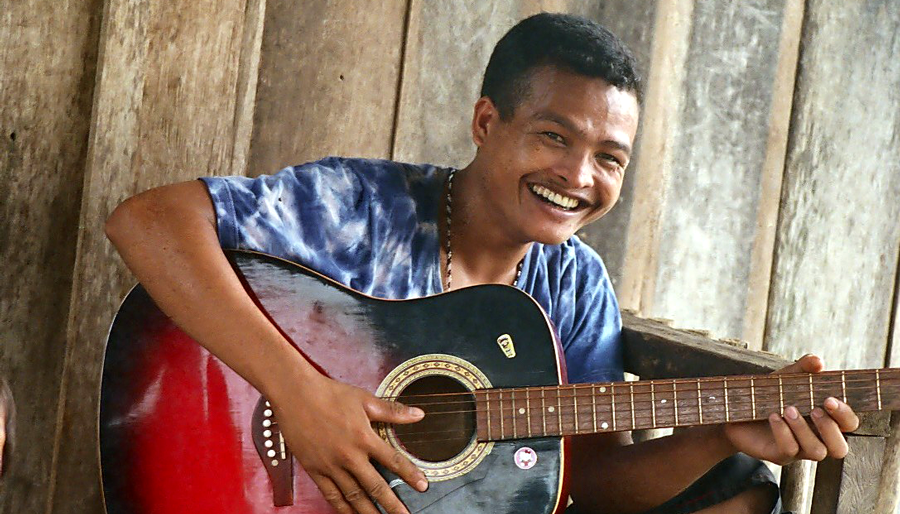
Author’s note: In communication with the Castelijns, they were profuse in their expressions of appreciation for their support team: guesthouse staff, pilots and mechanics, supply buyers, administration office staff, education consultants and all their home country prayer and financial supporters. Lynne said, “We are constantly aware that they are just as much a part of what God is doing among the Banwaon through their support roles as we are by being here.”

“I grew up reading and hearing stories about people who would hazard their lives in taking the gospel to remote cultures and to places that I could only discover in National Geographic. This forged a deep appreciation for missionaries who would ‘recklessly abandon’ all to follow Christ, often at great cost to themselves.
“Then God brought into my life a couple, Albert and Lynne. Though young, they were ‘old souls’ and refreshingly embodied the qualities that had captured my heart all those years before. They lived by faith, while many merely spoke about it. They embodied the spirit of Paul who said: ‘Having so fond an affection for you, we were well-pleased to impart to you not only the gospel of God but also our own lives, because you (the Banwaon) had become very dear to us’ (1 Thessalonians 2:8, NASB). They were on the cutting edge of contextualization, before it was the rage among ecclesiologists and missiologists.
“God has used this couple, in fact their whole family, to shape the face of the gospel cross-culturally in my life. I’ve had the privilege of laboring alongside them in the jungles of [the Philippines]. I have been blessed to pray for them fervently, to support them financially and to know them personally. God has faithfully shown Himself strong in and through their lives. I am blessed to have partnered with them through all these years and, I pray, for many more to come.”

